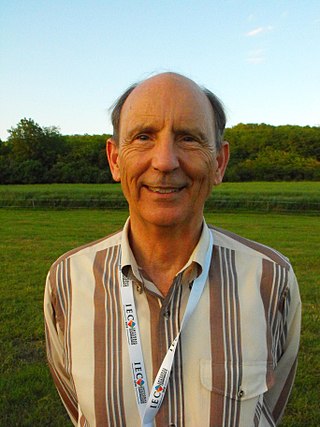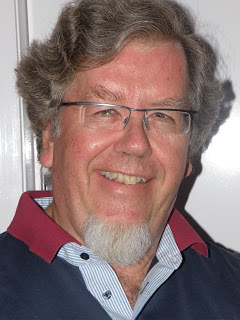
New Age is a range of spiritual or religious practices and beliefs which rapidly grew in Western society during the early 1970s. Its highly eclectic and unsystematic structure makes a precise definition difficult. Although many scholars consider it a religious movement, its adherents typically see it as spiritual or as unifying Mind-Body-Spirit, and rarely use the term New Age themselves. Scholars often call it the New Age movement, although others contest this term and suggest it is better seen as a milieu or zeitgeist.

Shamanism or samanism is a religious practice that involves a practitioner interacting with the spirit world through altered states of consciousness, such as trance. The goal of this is usually to direct spirits or spiritual energies into the physical world for the purpose of healing, divination, or to aid human beings in some other way.

The Dances of Universal Peace (DUP) are a spiritual practice that employs singing and dancing the sacred phrases of the world's religions. Their intention is to raise consciousness and promote peace between diverse religions according to one stated goal. The DUP are of North American Sufic origin. They combine chants from many world faiths with dancing, whirling, and a variety of movement with singing.

A drum circle is an informal gathering of percussionists and dancers who meet in public for the purpose of playing drums and dancing. Often seen at parks and beaches. Percussionists usually gather in a circle and dancers are often seen in the centre of the circle. The participants make up the music as they go along, using their listening and playing skills to make musical connections and express themselves in any and all ways that feel right. Drum circles often attract both regulars and spontaneous participation and they can range in size from a handful of players to circles with thousands of participants. Defining values of a drum circle include equality, autonomy, inclusivity and freedom of expression.
Neoshamanism refers to new forms of shamanism. It usually means shamanism practiced by Western people as a type of New Age spirituality, without a connection to traditional shamanic societies. It is sometimes also used for modern shamanic rituals and practices which, although they have some connection to the traditional societies in which they originated, have been adapted somehow to modern circumstances. This can include "shamanic" rituals performed as an exhibition, either on stage or for shamanic tourism, as well as modern derivations of traditional systems that incorporate new technology and worldviews.
Henry Barnard Wesselman (1941-2021) was an American anthropologist known primarily for his Spiritwalker trilogy of spiritual memoirs. In them, he claims to have been in contact with "Nainoa", an ethnic Hawaiian kahuna (shaman) living some 5,000 years in our future. The books envision the imminent collapse of Western civilization as a result of global warming. On a more positive note, Wesselman perceives an ongoing "wide-spread spiritual reawakening" which he dubs the "Modern Mystical Movement."
Plastic shamans, or plastic medicine people, is a pejorative colloquialism applied to individuals who attempt to pass themselves off as shamans, holy people, or other traditional spiritual leaders, but who have no genuine connection to the traditions or cultures they claim to represent. In some cases, the "plastic shaman" may have some genuine cultural connection, but is seen to be exploiting that knowledge for ego, power, or money.
Reclaiming is a tradition in neopagan witchcraft, aiming to combine the Goddess movement with feminism and political activism. Reclaiming was founded in 1979, in the context of the Reclaiming Collective (1978–1997), by two Neopagan women of Jewish descent, Starhawk and Diane Baker, in order to explore and develop feminist Neopagan emancipatory rituals.

Roger N. Walsh is an Australian professor of Psychiatry, Philosophy and Anthropology at the University of California, Irvine, in the Department of Psychiatry and Human Behavior, within UCI's College of Medicine. Walsh is respected for his views on psychoactive drugs and altered states of consciousness in relation with the religious/spiritual experience, and has been quoted in the media regarding psychology, spirituality, and the medical effects of meditation.

Ecstatic dance is a form of dance in which the dancers, sometimes without the need to follow specific steps, release themselves to the rhythm and move freely as the music takes them, leading to trance and a feeling of ecstasy. The effects of ecstatic dance begin with ecstasy itself, which may be experienced in differing degrees. Dancers are described as feeling connected to others, and to their own emotions. The dance serves as a form of meditation, helping people to cope with stress and to attain serenity.

Nevill Drury was an English-born Australian editor and publisher, as well as the author of over 40 books on subjects ranging from shamanism and western magical traditions to art, music, and anthropology. His books have been published in 26 countries and in 19 languages.

Gabrielle Roth was an American dancer and musician in the world music and trance dance genres, with a special interest in shamanism. She overcame depression and injury to create the 5Rhythms approach to movement in the late 1970s; there are now hundreds of 5Rhythms teachers worldwide who use her approach in their work. Her vision was to spread dance across the world, using the power of movement to heal body and spirit.

Anna Halprin was an American choreographer and dancer. She helped redefine dance in postwar America and pioneer the experimental art form known as postmodern dance and referred to herself as a breaker of the rules of modern dance. In the 1950s, she established the San Francisco Dancers' Workshop to give artists like her a place to practice their art. Exploring the capabilities of her own body, she created a systematic way of moving using kinesthetic awareness. With her husband, landscape architect Lawrence Halprin, she developed the RSVP cycles, a creative methodology that includes the idea of scores and can be applied broadly across all disciplines. Many of her creations have been scores, including Myths in the 1960s which gave a score to the audience, making them performers as well, and a highly participatory Planetary Dance (1987). Influenced by her own battle with cancer and her healing journey, Halprin became known for her work with the terminally ill patients as well as creative movement work in nature.
The red road is a modern English-language concept of the right path of life, as inspired by some of the beliefs found in a variety of Native American spiritual teachings. The term is used primarily in the Pan-Indian and New Age communities, and rarely among traditional Indigenous people, who have terms in their own languages for their spiritual ways. Native Americans' spiritual teachings are diverse. With over 500 federally-recognized tribes in just the US, while some regional practices and beliefs might be similar, the cultures are highly individualized. Individual ceremonies and particular beliefs tend to be unique to the people of these diverse bands, tribes and nations.

Bradford Keeney, Ph.D. is a creative therapist, cybernetician, anthropologist of cultural healing traditions, improvisational performer, and spiritual healer. Bradford Keeney has served as a professor, founder, and director of clinical doctoral programs in numerous universities. He is the originator of several orientations to psychotherapy including improvisational therapy, resource focused therapy, and creative therapy. He is the inventor of recursive frame analysis, a research method that discerns patterns of transformation in conversation. A Clinical Fellow of the American Association for Marriage and Family Therapy, he received the 2008 Distinguished Lifetime Achievement Award from the Louisiana Association for Marriage and Family Therapy.

5Rhythms is a movement meditation practice devised by Gabrielle Roth in the late 1970s. It draws from indigenous and world traditions using tenets of shamanistic, ecstatic, mystical and eastern philosophy. It also draws from Gestalt therapy, the human potential movement and transpersonal psychology. Fundamental to the practice is the idea that everything is energy, and moves in waves, patterns and rhythms.

Shamanism: Archaic Techniques of Ecstasy is a historical study of the different forms of shamanism around the world written by the Romanian historian of religion Mircea Eliade. It was first published in France by Librarie Payot under the French title of Le Chamanisme et les techniques archaïques de l'extase in 1951. The book was subsequently translated into English by Willard R. Trask and published by Princeton University Press in 1964.

Somatics is a field within bodywork and movement studies which emphasizes internal physical perception and experience. The term is used in movement therapy to signify approaches based on the soma, or "the body as perceived from within", including Skinner Releasing Technique, Alexander technique, the Feldenkrais Method, Eutony, Rolfing Structural Integration, among others. In dance, the term refers to techniques based on the dancer's internal sensation, in contrast with "performative techniques", such as ballet or modern dance, which emphasize the external observation of movement by an audience. Somatic techniques may be used in bodywork, psychotherapy, dance, or spiritual practices.

Kev Dab Kev Qhuas is the common ethnic religion of the Miao people, best translated as the "practice of spirituality". The religion is also called Hmongism by a Hmong American church established in 2012 to organize it among Hmong people in the United States.
Researchers have noted the relationship between psychedelics and ecology, particularly in relation to the altered states of consciousness (ASC) produced by psychedelic drugs and the perception of interconnectedness expressed through ecological ideas and themes produced by the psychedelic experience. This is felt through the direct experience of the unity of nature and the environment of which the individual is no longer perceived as separate but intimately connected and embedded inside.













